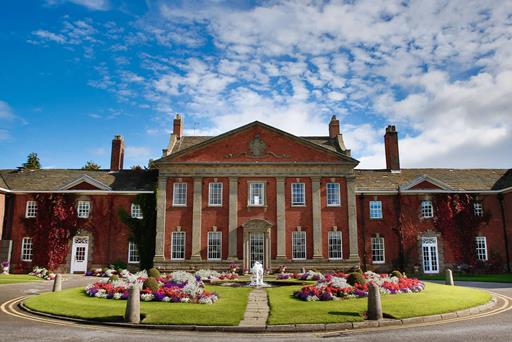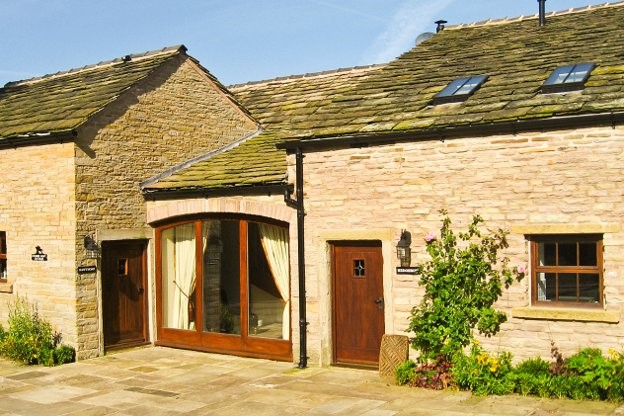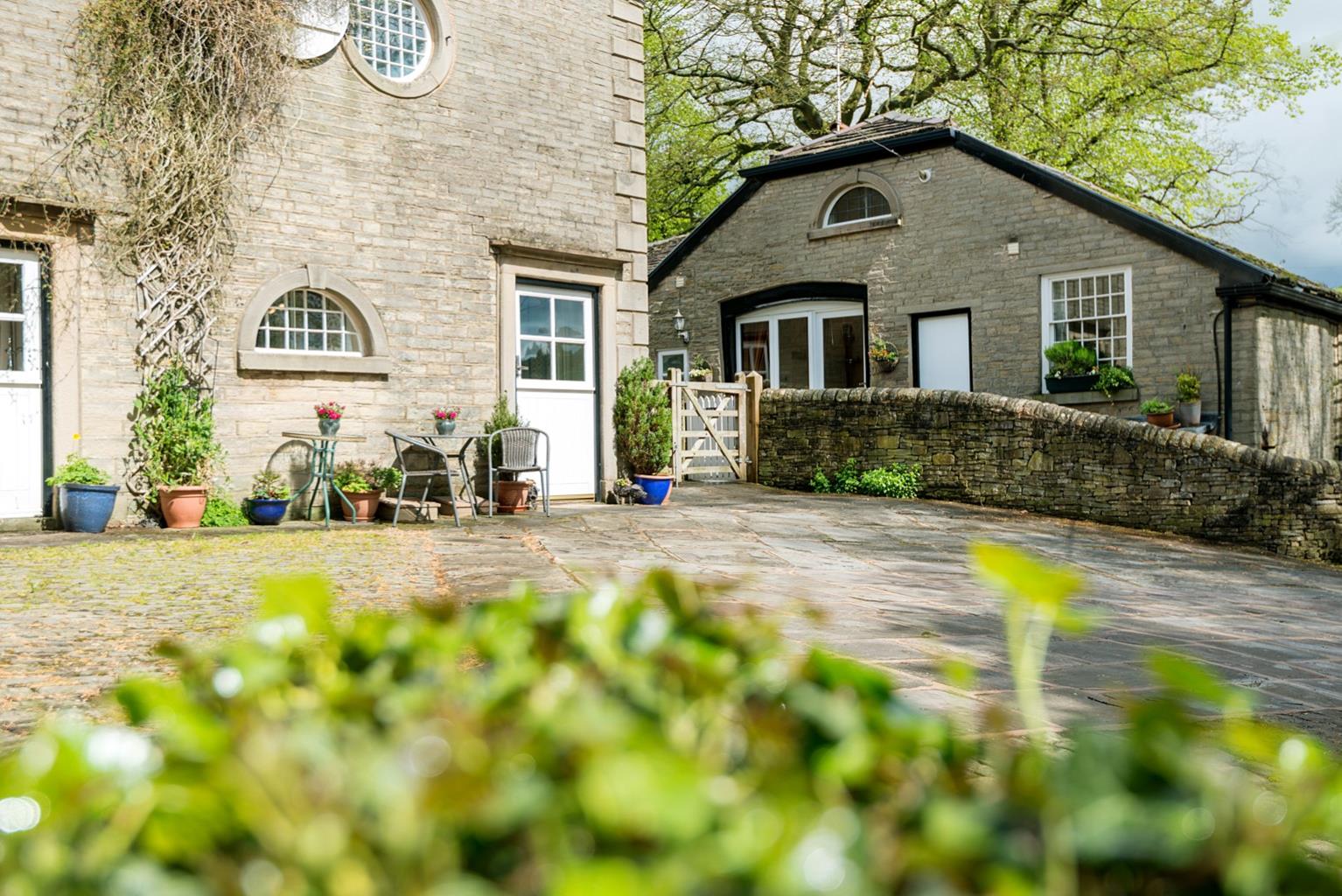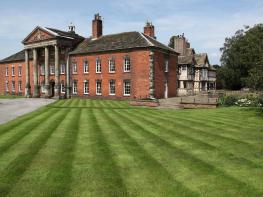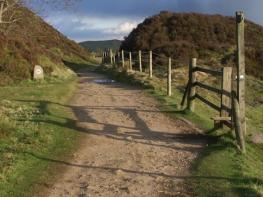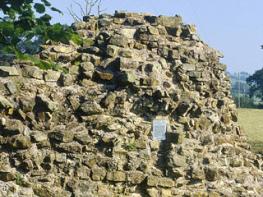The two Cottages , the result of a barn conversion, have been individually furnished enjoying…
Around Lyme Park

Mr Darcy's footsteps at Pemberley Hall
5.2 miles (8.5kms)
About the walk
Lyme Park was originally created by Richard II, who, in 1398, granted land in the Royal Forest of Macclesfield. It became the ancestral home of the Legh family for the next five and a half centuries, and they were responsible for developing the original house into the sumptuous pile that you see today. In 1946 the house and park were donated to the National Trust. The grounds are open all year and the lovely rolling parkland and moorland tracks with their fabulous views over Cheshire and the Dark Peak are well worth exploring.
It’s the classic English stately home: a medieval manor house that was gradually transformed into a large and elegant Palladian mansion, and which is today full of antique furniture and tapestries, carvings and clocks. Outside, there are formal gardens (including an Edwardian Rose Garden and an Orangery), plus 1,400 acres (567ha) of gorgeous open moorland and parkland that are home to herds of red and fallow deer. Such is the sheer magnetism of the place that it was chosen to be the location of Pemberley for BBC Television’s adaptation of Jane Austen’s Pride and Prejudice in 1995, and the sight of a wet Mr Darcy (played by Colin Firth) striding across the grounds remains indelibly printed on many minds.
Near Pursefield Wood is the 300-year-old Paddock Cottage, which was built partly to enhance the radiating views visitors enjoyed to and from the main house. A few of these so-called vista lines, all carefully plotted so that the house can be admired from surrounding locations, are still visible today, including one impressive corridor through the trees of Knightslow Wood to the south of the house.
Other eye-catching buildings include the various lodges that are dotted around the park’s perimeter, including Parkgate Lodge. This was once known as the Dower House and was where the widowed mothers of the Lords of the Manor would be expected to reside. Although the house is often hidden by the undulating moorland and dense patches of woodland, this walk offers ever-changing views of Lyme Park, from tree-lined avenues and open meadows to the tiny reservoirs of the Bollinhurst Valley.
Walk directions
With the information booth behind you, cross the main car park then turn left up the main drive. Just before it bends over a cattle grid, fork off left along a broad track, towards Knightslow Wood, and follow this ahead through a gate. The trail climbs beside a long stand of pine trees. Pass through another gate into the wood and take the left fork.
On reaching a gate at the far side, take the track ahead, which snakes on to the moor towards communication masts sprouting from the skyline. Go over a ladder stile near the top then emerge at the top of a lane by Bowstone Gate Farm. (The Bow Stones themselves are set back in a small enclosure to the left of the lane just beyond the farm entrance.)
Turn left and follow the lane downhill to a junction opposite the entrance to High Peak School. Turn left immediately up a farm drive (Cock Knoll Farm) signed to East Lodge. Bear right through the farmyard, leaving through a gate by the end barn. Head straight down the left-hand side of the field.
By a small patch of woodland, fork left through a metal gate then across a stream. Bend right just beyond a set of ruins under some tall beech trees, then occasional waymarkers guide you across several rough pastures to emerge over a stile on to a track (the main Gritstone Trail route)
A shortcut leads left past East Lodge to Lyme House, but the main route turns right and down to the unsafe Bollinhurst Bridge. This is now bypassed by a wooden footbridge, then climb past a Millennium Woodland to a junction of paths.
Go left through a gate and head left (signed North Lodge) across a rough meadow. Descend gently beside a wood on the right, shortly crossing a stile. Continue on a narrow wooded spur between two streams, crossing the rightmost stream by a stone wall then over a stile. Continue beside the wall, soon at the edge of pastures overlooking Bollinhurst Reservoir. Cross over a track then continue ahead through fields just right of a farm. Go right over a stile into woodland and follow a wide track above a small ravine. Turn right at a junction and carry on along tarmac to a park entrance (North Lodge).
Turn left through the lodge gate and left again along the main park drive. Almost immediately, fork left then follow intermittent red arrow waymarkers on to the hill, along its spine past the grand hilltop building ‘The Cage’, then down towards Lyme House. Approaching the ornamental gates, a track on the right drops back to the car park.
Additional information
Generally firm, field tracks can be boggy if wet, several stiles
Rolling parkland and fields, some moorland
Keep on lead in park and near livestock; under close control at all other times.
OS Explorer OL1 Peak District – Dark Peak Area
Lyme Park, off A6 (free to National Trust members, charge at entrance to non-members)
By Timber Yard Café, near main car park
Lyme Park opening hours 8-8 summer, 8-6 winter
WALKING IN SAFETY
Read our tips to look after yourself and the environment when following this walk.
Find out more
Also in the area
About the area
Discover Cheshire
Nestled between the Welsh hills and Derbyshire Peaks, the Cheshire plains make an ideal location to take things slow and mess around in boats. Cheshire has more than 200 miles (302 km) of man-made waterways, more than any other county in England. The Cheshire Ring is formed from the Rochdale, Ashton, Peak Forest, Macclesfield, Trent and Mersey and Bridgewater canals. This route takes you through a lot of Cheshire, and bits of other counties as well.
While exploring the county’s waterways, covering ground on foot or admiring the typical white plaster and black timber-frame houses, make sure to have a taste of Cheshire’s most famous produce. Although Cheddar has become Britain’s most popular cheese (accounting for over half of the cheese sales in the UK), it was once Cheshire cheese that was in every workman’s pocket back in the 18th century. Its moist, crumbly texture and slightly salty taste mean it goes well with fruit, peppers or tomatoes. As well as the usual white, there are also red and blue veined varieties.
Nearby stays
Restaurants and Pubs
Nearby experiences
Recommended things to do
Why choose Rated Trips?
Your trusted guide to rated places across the UK
The best coverage
Discover more than 15,000 professionally rated places to stay, eat and visit from across the UK and Ireland.
Quality assured
Choose a place to stay safe in the knowledge that it has been expertly assessed by trained assessors.
Plan your next trip
Search by location or the type of place you're visiting to find your next ideal holiday experience.
Travel inspiration
Read our articles, city guides and recommended things to do for inspiration. We're here to help you explore the UK.

